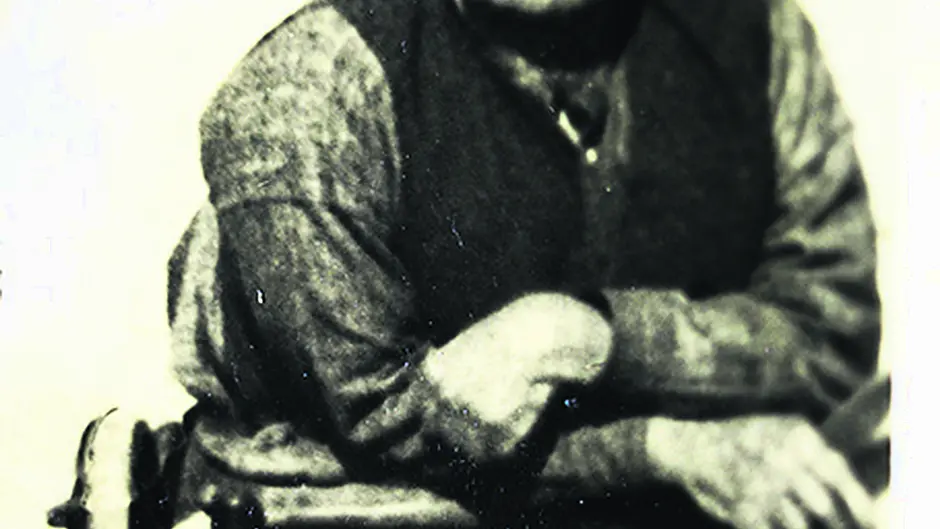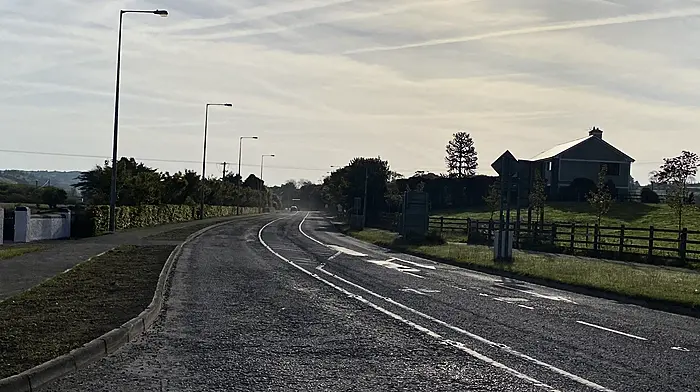A new novel reveals how one little boy from Beara – whose family wanted to hide him away – refused to allow his disability get the better of him.
‘FROM the age of nine, Johnnie Gill’s family tried to keep him hidden.’
And so starts the remarkable story of the boy who became known as ‘Johnny Wheels’, a result of incredible research and attention to detail by author Victor Sullivan.
Johnny ‘Wheels’ Gill, the cripple who became a legend in his native Beara, was Victor’s great-uncle.
And the discovery of Johnny’s revolver (in a family field near Castletownbere) by Victor, co-incidentally also aged nine, led to a lifelong fascination with the man. Victor was determined to allow the story of this ingenious man have its rightful place in the history of Beara.
‘I have basically been writing this book since the age of nine,’ said Victor. ‘Because from that day on, I knew there was a story in it.’
But he also realised that Johnnie’s story would open a can of worms in his own family because so many of them had been ashamed of their disabled relation.
‘To be honest, I had to wait until anyone who might be upset was dead and gone,’ said Victor, explaining why it took him so long to finish the story.
Born close to Puxley Manor, where his father helped out with maintenance jobs, young Johnnie almost lost his life when a sheep riding incident with his older brothers left him without the use of his legs.
His parents had been told he wouldn’t live to see the next morning, but in fact he did, and the morning after that, and after that. However, life in Ireland in the late 1800s was no place for a cripple – well certainly not in public, at any rate, and his family did their best to keep him as their ‘secret’.
‘This was so common then,’ explained Victor. ‘Almost every family had someone they wanted hidden away – someone not to be spoken about. I even knew some families like that in my own youth.’
While Victor undertook years of research and interviewed anyone who knew of Johnnie, or heard stories about him, he had to be a bit ‘loose’ with the truth in places, to fill in the gaps. But all the major events in the book were told to him and, rather than showing Johnnie as a cripple to be pitied or shunned, they reveal a truly ingenious man who was ahead of his time.
Within days of the accident, young Johnnie was made sleep under the stairs with his faithful dog, Captain. But later the family organised a little room for him upstairs, above the kitchen. But as Captain wasn’t allowed upstairs in the Gill home, Johnnie had lost his closest companion.
This feisty young boy had a huge determination not to allow his disability leave him confined to a life of solitude and boredom. Hearing of his predicament, the Puxleys often sent magazines and manuals home with Johnnie’s father, for him to pass away the time. But little did they realise that strong-willed Johnnie wasn’t content with just reading about machinery or engineering, he was determined to make use of his knowledge.
He started by creating little gifts for his younger sister – a wooden pencil box, a wooden fish, and then some jewellery. When she brought them to school, word quickly spread of her talented brother. A visit to Puxley Manor on the back of his father’s cart resulted in the estate manager allowing Johnnie to retrieve some items from a bonfire out back.
One of the items he took home was a broken wall clock, but in no time, he had figured out how to fix it and soon had a little clock-fixing business up and running. Now a young teenager, Johnnie was quickly becoming expert at anything involving work with his hands.

Johnnie's revolver, which Victor found in the field in Castletownbere.
He also made fishing tackle – equipment that was very popular in his native Castletownbere, of course. He even sold some of his furniture to a family on Bere Island, thus allowing him to describe himself as a ‘furniture exporter’!
A local tailor made him a leather harness which helped him drag himself around with more ease, which Johnnie mischievously called ‘Cromwell’. And then his big creation – a contraption for wheeling himself around, made with discarded metal found around the farm and taken from the local blacksmith’s yard. He called this device his ‘Eureka’ and the parts that propelled him forward – his horses.
With this, Johnnie finally got his independence and freedom and his weary and once-horrified mother gave up trying to keep him hidden. His father discovered that he was now hugely proud of his talented son, and encouraged him at every turn.
Johnnie ‘Wheels’ became a familiar face on the roads of Beara, hitching a ride from passing carts, by throwing his rope (affectionately called ‘Belle’) onto the back axel and being towed to his next destination.
There are some very funny parts in this wonderfully written book, like Victor’s description of the one hazard of riding in this position behind the horse and cart: the ‘rising tail’. ‘To avoid unpleasantness, he would pay out a few yards of Belle, then pull himself back to near-axle position after the conclusion of the equine performance.’ Nothing was too much of a challenge for Johnnie Wheels, it seems.

The Gill homestead outside Castletownbere.
The book is a labour of love for Victor who spent years attempting to get the real picture of this very colourful character who refused to let his disability slow him down. In fact, it was the makings of him, some might say.
There is not just the story of his great triumph over his massive disability, but the book also includes tales of more tragedy, love, politics and even the likelihood that Johnnie was the last man to see the Titanic before it sank.
Who could resist such a wonderful story that, like Johnnie himself, was hidden from view for far too many years?
Who was Johnnie Wheels? is published by Southern Star Creative, and was launched in the Beara Coast Hotel on Friday December 6th and Bere Island on December 7th.
Victor has decided to donate proceeds from the sale of the book to the Irish Wheelchair Association.

The book was published by Southern Star Creative.







